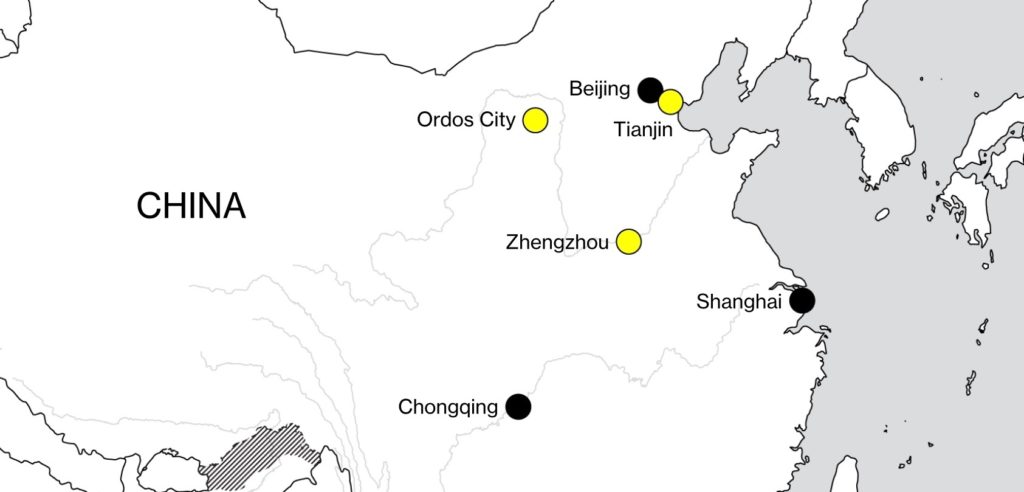By James Mayger, Lucille Liu, Yujing Liu, Lin Zhu, and Yinan Zhao, Bloomberg News, September 1, 2021
“China’s so-called ghost cities became the subject of Western media fascination a decade ago. Photos showed empty apartment towers in a sea of mud; broad boulevards devoid of cars or people; and over-the-top architectural showpieces.
“Max Woodworth, an associate professor of geography at Ohio State University, said, ‘The result is a landscape that appears very city-like but without much action.’ China was under-urbanized for many years, Woodworth says, and raced to correct that.
“In 1978 just 18 percent of its population lived in cities; by last year the figure was 64 percent. More than one-tenth of the world’s population resides in Chinese cities.
“The power of the state gives Chinese cities an initial push toward vitality: government offices and state-owned enterprises are the first to move in. Conference centers, sports stadiums, and museums follow, sometimes with speculative residential development, schools, and a high-speed rail station.
“The government wants the trend of urban migration to continue, and since Beijing and Shanghai strictly limit the number of fresh arrivals they’ll accept, new population centers have become all the more important.
“It’s hard to say how China’s reputed ghost cities are faring collectively: Government data aren’t publicly available, and independent research is spotty.

Zhengzhou
“For an example of how well things can go for a ghost city, look to Zhengzhou, the capital of Henan province.
“In 2013, 60 Minutes described the place as a ghost town: “new towers with no residents, and vacant subdivisions uninhabited for miles.”
“But today, Zhengdong New District is bustling with life. It started in 2002 and now has 945,000 residents.
“About half of the world’s iPhones are manufactured here at Foxconn. Favorable government policies attracted large pharmaceutical and auto plants. The population of the district grew 27.5 percent from 2019 to 2020, and property prices are up tenfold over the past decade.
“In other words, if you build it, the people will eventually come. When it comes to urbanization, China is playing a very long game.”
[Ed. note. A “deluge in the city of Zhengzhou … on July 20, 2021, killing at least 300, … revealed how China’s years of go-go construction had left its cities vulnerable to climate change.” How Record Rain and Officials’ Mistakes Led to Drownings on a Subway, The New York Times, September 25, 2021.]

